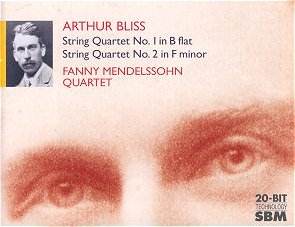 Composer: Johann Sebastian Bach, Carl Philipp Emanuel Bach, Johann Christian Bach, Wilhelm Friedemann Bach, Johann Christoph Friedrich Bach
Composer: Johann Sebastian Bach, Carl Philipp Emanuel Bach, Johann Christian Bach, Wilhelm Friedemann Bach, Johann Christoph Friedrich Bach
Works: Berlin Symphonies, Cello Concertos, Flute Concertos, Symphonies, Sinfonia Concertante, Orchestral Works
Performers: Kammerorchester C.P.E. Bach, Balázs Maté (cello), Machiko Takahashi (flute), Concertgebouw Chamber Orchestra, London Festival Orchestra, Neues Bachisches Collegium Musicum
Recording: Various dates, Christuskirche Berlin, 1985; 1993; 1994; 1992
Label: Brilliant Classics
The musical legacy of Johann Sebastian Bach is often overshadowed by his own monumental contributions, yet his sons carved distinct pathways through the rich tapestry of the 18th-century musical landscape. This comprehensive seven-CD set from Brilliant Classics showcases the orchestral and concertante works of four of his sons: Carl Philipp Emanuel, Johann Christian, Wilhelm Friedemann, and Johann Christoph Friedrich. Each disc encapsulates a unique voice that both reflects and diverges from the formidable influence of their father, revealing a wide range of styles and emotional depths.
The first CD features five of C.P.E. Bach’s Berlin Symphonies, which are vibrant examples of the galant style and a testament to the composer’s innovative spirit. The Kammerorchester C.P.E. Bach, under Hartmut Haenchen’s direction, delivers a performance imbued with energy that highlights the contrasting moods inherent in these works. For instance, the Larghetto from the E-flat major Symphony (Wq 179) unfolds with a pastoral delicacy, showcasing melodic richness that often recalls the reflective moments in his father’s oeuvre. The orchestra’s balance, particularly in the wind and string sections, allows for the playful dialogues between instruments to shine, though the strings occasionally dominate, obscuring the finer textures of the woodwinds.
C.P.E. Bach’s Cello Concertos, presented on the second disc, reveal a deeper emotional landscape. Balázs Maté’s interpretation of the A minor Concerto (Wq 160) is notable for its lyrical expressiveness, especially in the Andante, where the cello’s voice resonates with an almost vocal quality. However, Maté’s romantic approach, while engaging, diverges from the “authentic” ethos this recording claims. The tutti sections are executed with vigor, but a more historically informed interpretation might better serve the intricate dialogues that characterize these concertos. The engineering captures a warm, resonant sound, though some moments risk losing clarity due to a slightly heavy string texture.
The third disc, dedicated to C.P.E. Bach’s Flute Concertos, offers a delightful contrast to the preceding works. Machiko Takahashi’s fluid artistry shines in the B-flat major Concerto (Wq 164), where her phrasing exhibits grace reminiscent of Mozart’s lighter works. The Concertgebouw Chamber Orchestra provides an excellent backdrop, maintaining a nuanced balance that allows the flute to soar above the accompaniment. This music, while lighter in character, remains rich in melodic invention, as evidenced in the Largo e mesto, which evokes a poignant serenity. The sound engineering here achieves a crisp clarity, allowing the interplay of woodwinds to emerge without obscured layers.
Johann Christian Bach’s contributions, comprising symphonies and sinfonia concertante, occupy the fourth and fifth discs. While they are undeniably pleasant, they often lack the depth and complexity found in C.P.E. Bach’s works. The performances, particularly by the London Festival Orchestra under Ross Pople, are competent but do not transcend the material. The G major Symphony (Op. 6 No. 1) is executed with a lively spirit, yet it feels somewhat predictable, offering little in the way of musical surprise. The engineering captures the full orchestral sound, but the overall effect remains somewhat tepid compared to the more daring explorations of C.P.E. Bach.
The sixth CD features Wilhelm Friedemann Bach’s orchestral works, highlighting his bold, often dissonant harmonic language. The Sinfonia in F major (Dissonant) is particularly striking, with its audacious opening that must have challenged contemporary listeners. The Kammerorchester C.P.E. Bach under Haenchen manages to convey the work’s complexity, though the recording lacks the depth that might enhance its impact. The final disc, showcasing Johann Christoph Friedrich Bach, tends toward the forgettable, with symphonies that echo the styles of his contemporaries without forging an original identity.
This collection offers a fascinating exploration of the Bach family’s lesser-known works, particularly illuminating the innovative spirit of C.P.E. Bach. While it presents a mixed bag—some performances that redefine expectations and others that merely echo the past—it serves as a valuable resource for those wishing to delve deeper into the Bach lineage. The technical quality and interpretative choices vary, but the overall tapestry of music reveals the profound influence of Johann Sebastian Bach on his sons, as well as their individual artistic voices. A worthwhile endeavor for enthusiasts and scholars alike, this set opens a window into a vibrant chapter of musical history that merits greater recognition.



